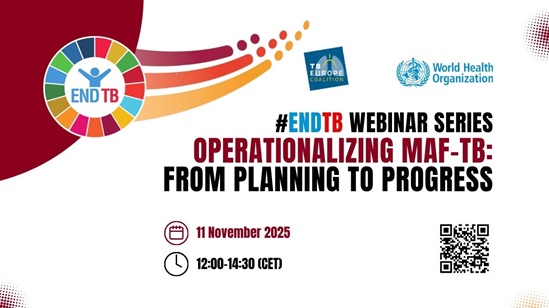The contagion scale: which diseases spread fastest? – Gavi, the Vaccine Alliance
/https://media.globalcitizen.org/ea/a3/eaa33aa5-1fd3-4d92-802f-14e7fc48d190/gavi-whats-next-vaccination-campaigns-malaria-uganda-001.jpg?#)
Analysis of Infectious Disease Transmission and its Implications for Sustainable Development Goal 3
Introduction: Global Health Security and SDG 3
Understanding the transmission dynamics of infectious diseases is fundamental to achieving Sustainable Development Goal 3 (SDG 3), which aims to ensure healthy lives and promote well-being for all at all ages. The spread of communicable diseases poses a significant threat to global health security and undermines progress towards key health targets. A critical metric in this analysis is the basic reproduction number, or R0 (R-nought), which quantifies the contagiousness of an infectious agent and informs public health strategies designed to meet SDG 3.3: ending the epidemics of communicable diseases.
Mechanisms of Disease Transmission
Infectious diseases are transmitted through various routes, impacting the efficacy of control measures. Key transmission pathways include:
- Fomites: Inanimate objects such as doorknobs, elevator buttons, and water fountains that become contaminated with pathogens and serve as vehicles for infection.
- Droplets/Aerosols: Respiratory particles released through coughing, sneezing, or speaking that can transmit viruses and bacteria.
- Direct Contact: Transmission through physical contact with the bodily fluids of an infected person.
- Other Vectors: Contaminated food and water, or insects like mosquitoes and ticks.
The R0 value indicates the average number of secondary infections produced by a single infected individual in a completely susceptible population. The value determines the potential scale of an outbreak:
- R0 > 1: The number of infected individuals is likely to increase, leading to an outbreak or epidemic.
- R0 = 1: The disease will remain stable and endemic within the population.
- R0 The infection is likely to decline and eventually die out.
High-Contagion Diseases: A Challenge to SDG 3.3
Highly contagious diseases present a formidable challenge to the global commitment to end epidemics by 2030. Measles is the most contagious known virus, with an R0 value between 12 and 18. It spreads through airborne particles that can remain infectious in a room for up to two hours after an infected person has left. The recent resurgence of measles, linked to declining vaccination rates, directly threatens the progress of SDG 3. Other diseases with high R0 values include:
- Pertussis (Whooping Cough): R0 of 12-17
- Chickenpox: R0 of 10-12
- COVID-19 (variant dependent): R0 generally between 8-12
These diseases can cause severe complications, including pneumonia, meningitis, and death, placing a heavy burden on health systems and hindering the achievement of good health for all.
Low-Contagion, High-Impact Diseases
A lower R0 value does not diminish the severity or public health importance of a disease. Tuberculosis (TB), a key target for elimination under SDG 3.3, exemplifies this principle. TB is an airborne bacterium with an R0 ranging from less than one to four, typically requiring prolonged close contact for transmission. The primary danger of TB lies in its treatment complexity, requiring a multi-drug regimen for at least six months, and the growing threat of drug-resistant strains. Other diseases with lower R0 values but significant mortality or morbidity include:
- Ebola: R0 of 1.5-2.5, spread via bodily fluids.
- Middle East Respiratory Syndrome (MERS): R0 below 1.
- Leprosy: R0 below 1.
Preventative Measures and the Pursuit of Universal Health Coverage (SDG 3.8)
Preventative measures, particularly immunization, are critical tools for managing infectious diseases and advancing SDG 3. Widespread vaccination is essential not only for individual protection but also for establishing herd immunity, which shields vulnerable populations who cannot be vaccinated, such as infants, pregnant women, and the immunocompromised. This collective protection is a cornerstone of achieving Universal Health Coverage (SDG 3.8), which includes access to safe, effective, and affordable vaccines for all.
By strengthening immunization programs and ensuring equitable access, nations can reduce the transmission of communicable diseases, manage global health risks as outlined in SDG 3.d, and make substantive progress toward ensuring healthy lives and well-being for all populations.
SDGs Addressed in the Article
SDG 3: Good Health and Well-being
This is the most prominent SDG in the article. The entire text focuses on infectious diseases, their transmission, prevention, and the importance of public health measures. The discussion revolves around ensuring healthy lives and promoting well-being for all ages by combating communicable diseases.
- The article details various infectious diseases like measles, COVID-19, tuberculosis (TB), and Ebola.
- It emphasizes the critical role of vaccination in preventing disease spread, mentioning the MMR vaccine for measles and highlighting how a “decline in childhood vaccination rates” has led to a resurgence of the disease.
- It discusses treatments, such as the complex antibiotic regimen required for TB, and the growing problem of “drug-resistant TB.”
- The concept of “herd immunity” is explained as a collective public health benefit that protects the most vulnerable, directly aligning with the goal of well-being for all.
SDG 4: Quality Education
The article indirectly connects to SDG 4 by highlighting the negative impact of misinformation on public health outcomes.
- It states that a primary cause for the decline in vaccination rates, alongside pandemic disruptions, is the “spread of misinformation about vaccine safety.” This points to a need for better public education and scientific literacy to counter false information and promote health-seeking behaviors.
SDG 11: Sustainable Cities and Communities
The article touches upon this goal by linking disease transmission to living conditions.
- When discussing tuberculosis (TB), it notes that the R0 value “varies depending on local factors like living conditions” and that “outbreaks tend to occur among people who share living spaces – such as families, households, and in shelters or prisons.” This implies that inadequate housing and overcrowded conditions in communities contribute to health risks.
Specific Targets Identified
Targets under SDG 3: Good Health and Well-being
-
Target 3.3: By 2030, end the epidemics of AIDS, tuberculosis, malaria and neglected tropical diseases and combat hepatitis, water-borne diseases and other communicable diseases.
The article is centered on understanding and combating communicable diseases. It explicitly names and discusses measles, COVID-19, pertussis, chickenpox, tuberculosis, Ebola, MERS, and leprosy, all of which fall under the category of “other communicable diseases” that this target aims to end.
-
Target 3.8: Achieve universal health coverage, including … access to safe, effective, quality and affordable essential medicines and vaccines for all.
The text repeatedly underscores the importance of vaccines as a primary preventative measure. The discussion of the measles resurgence being caused by a “decline in childhood vaccination rates” directly relates to the challenge of achieving universal access to and uptake of essential vaccines.
-
Target 3.d: Strengthen the capacity of all countries… for early warning, risk reduction and management of national and global health risks.
The article explains the R0 (R-nought) value as a scientific tool to measure and predict how an infection will “spread in a population.” Understanding R0 is a key part of risk assessment and management, allowing health authorities to anticipate the scale of an outbreak and implement appropriate control measures, which is the core of this target.
Target under SDG 11: Sustainable Cities and Communities
-
Target 11.1: By 2030, ensure access for all to adequate, safe and affordable housing and basic services…
This target is implied when the article states that TB outbreaks are common in specific environments like “shelters or prisons.” This links the spread of an infectious disease directly to inadequate living conditions, suggesting that improving housing is a component of public health and disease prevention.
Indicators for Measuring Progress
Indicators for SDG 3 Targets
- R0 (R-nought) Value: The article extensively explains the R0 value as a measure of how many people are likely to become infected from a single case. It provides specific R0 values for measles (12-18), pertussis (12-17), chickenpox (10-12), COVID (8-12), and TB (
- Vaccination Coverage Rates: The article explicitly identifies a “decline in childhood vaccination rates” as the primary cause for the resurgence of measles. Therefore, the proportion of the population vaccinated (e.g., with the MMR vaccine) is a direct and critical indicator for measuring progress towards Target 3.8 and preventing outbreaks as per Target 3.3.
- Disease Incidence Rates: The article mentions “confirmed cases of measles in England” and discusses outbreaks of various diseases. The number of new cases of a specific disease (like TB or measles) per 100,000 people is a standard epidemiological indicator to track progress on ending epidemics (Target 3.3).
- Prevalence of Drug-Resistant Strains: The article notes that “cases of drug-resistant TB are on the rise.” Tracking the proportion of TB cases that are drug-resistant is an important indicator of the challenges in treating and ending the TB epidemic (Target 3.3).
Indicator for SDG 11 Target
- Disease Incidence in Specific Dwellings: The article implies that the rate of TB outbreaks in “shelters or prisons” is linked to living conditions. Therefore, the incidence rate of airborne diseases like TB within such high-density or low-quality housing environments can serve as an indirect indicator of progress towards providing adequate and safe housing for all (Target 11.1).
Summary of Findings
| SDGs | Targets | Indicators |
|---|---|---|
| SDG 3: Good Health and Well-being |
3.3: End epidemics of communicable diseases.
3.8: Achieve universal health coverage, including access to vaccines. 3.d: Strengthen capacity for early warning and management of health risks. |
– Disease incidence rates (e.g., “confirmed cases of measles”). – Prevalence of drug-resistant strains (e.g., “drug-resistant TB”). – Vaccination coverage rates (e.g., “decline in childhood vaccination rates”). – R0 (R-nought) value to assess disease spread. |
| SDG 4: Quality Education | 4.7: Ensure learners acquire knowledge for sustainable development. | – Implied indicator: Prevalence of health-related misinformation (e.g., “spread of misinformation about vaccine safety”). |
| SDG 11: Sustainable Cities and Communities | 11.1: Ensure access for all to adequate, safe and affordable housing. | – Incidence of communicable diseases (e.g., TB) in specific living environments like “shelters or prisons.” |
Source: gavi.org

What is Your Reaction?
 Like
0
Like
0
 Dislike
0
Dislike
0
 Love
0
Love
0
 Funny
0
Funny
0
 Angry
0
Angry
0
 Sad
0
Sad
0
 Wow
0
Wow
0

























_1.png?#)























































